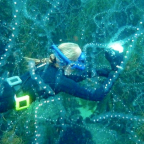October 19, 2012
Posted in News

A new atlas of the world’s oceans issued on Tuesday shows more than 3,000 sites important to seabirds as part of a drive to improve conservation.
The free online atlas could help governments plan, for instance, where to set up wildlife protection areas at sea or where to permit offshore wind turbines or oil and gas exploration, they said.
The atlas, showing areas vital to birds including pelicans, sandpipers, cormorants and skuas, was compiled by BirdLife International, drawing on work by 1,000 bird experts, government ministries and secretariats of UN conventions.
“Seabirds are now the most threatened group of birds. They present unique conservation problems, since many species travel thousands of kilometres across international waters,” BirdLife International said in a statement.
It iden...
Read More














Social Profiles